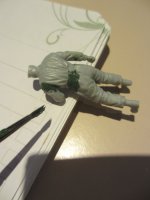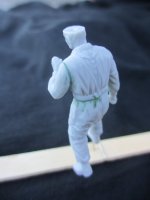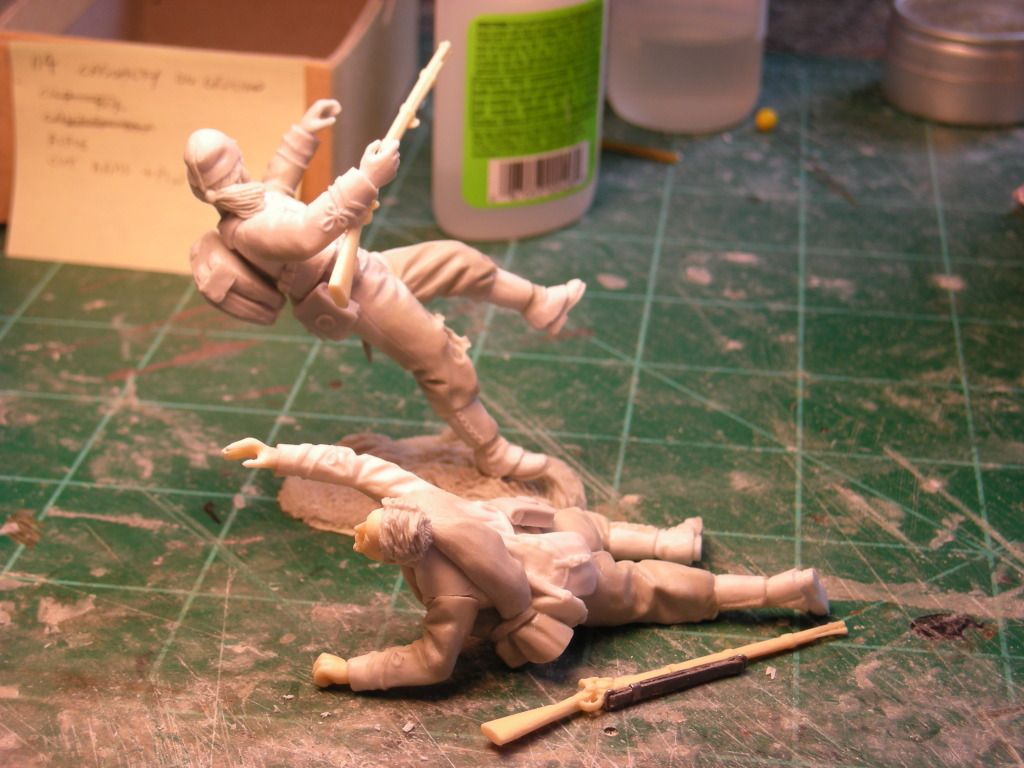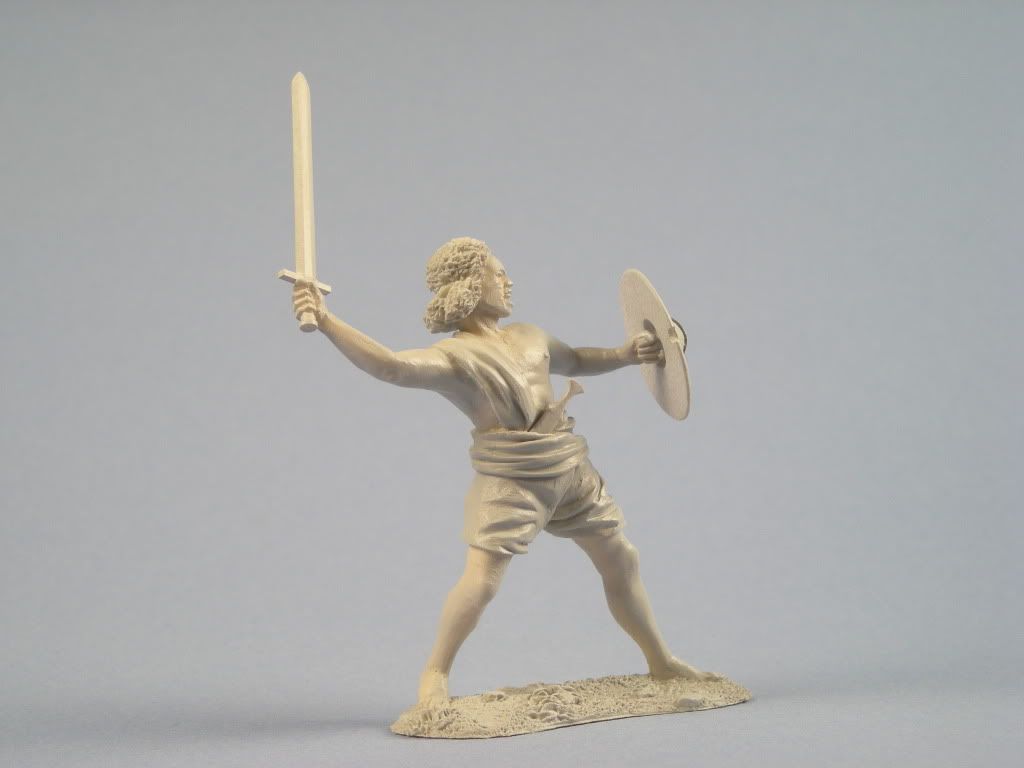Hazebrouck
Sergeant
- Joined
- Aug 30, 2010
- Messages
- 634
I'm working on some dragon 1/35 figures and filled some cracks with my trusted old tube of Squadron Signal Greenstuff earlier today.
The thing about Greenstuff is that it smells and I have always found it difficult to apply as it is quite dry. I normally push it into gaps with a toothpick or apply it with my finger (covered in surgical gloves or glad wrap).
I have used it on metal figures I have constructed, but have found that the good castings don't need much additional filling if I use ample araldite.
I should say that I persevere with the Greenstuff as it sand wells and adheres to the figures.
Am I behind the times? What other fillers are figure builders/painters using?
Any application tips with Greenstuff?
Scott
The thing about Greenstuff is that it smells and I have always found it difficult to apply as it is quite dry. I normally push it into gaps with a toothpick or apply it with my finger (covered in surgical gloves or glad wrap).
I have used it on metal figures I have constructed, but have found that the good castings don't need much additional filling if I use ample araldite.
I should say that I persevere with the Greenstuff as it sand wells and adheres to the figures.
Am I behind the times? What other fillers are figure builders/painters using?
Any application tips with Greenstuff?
Scott





